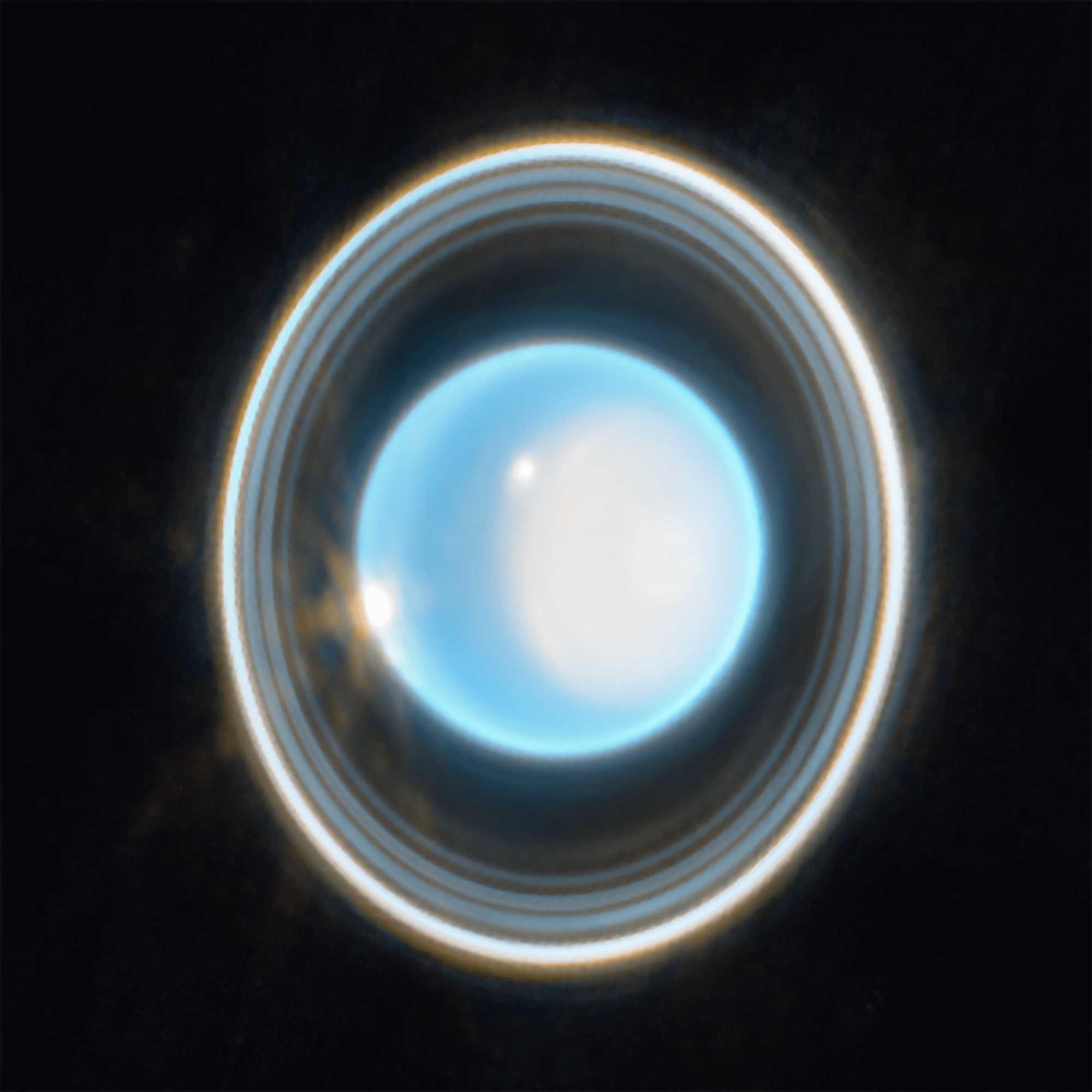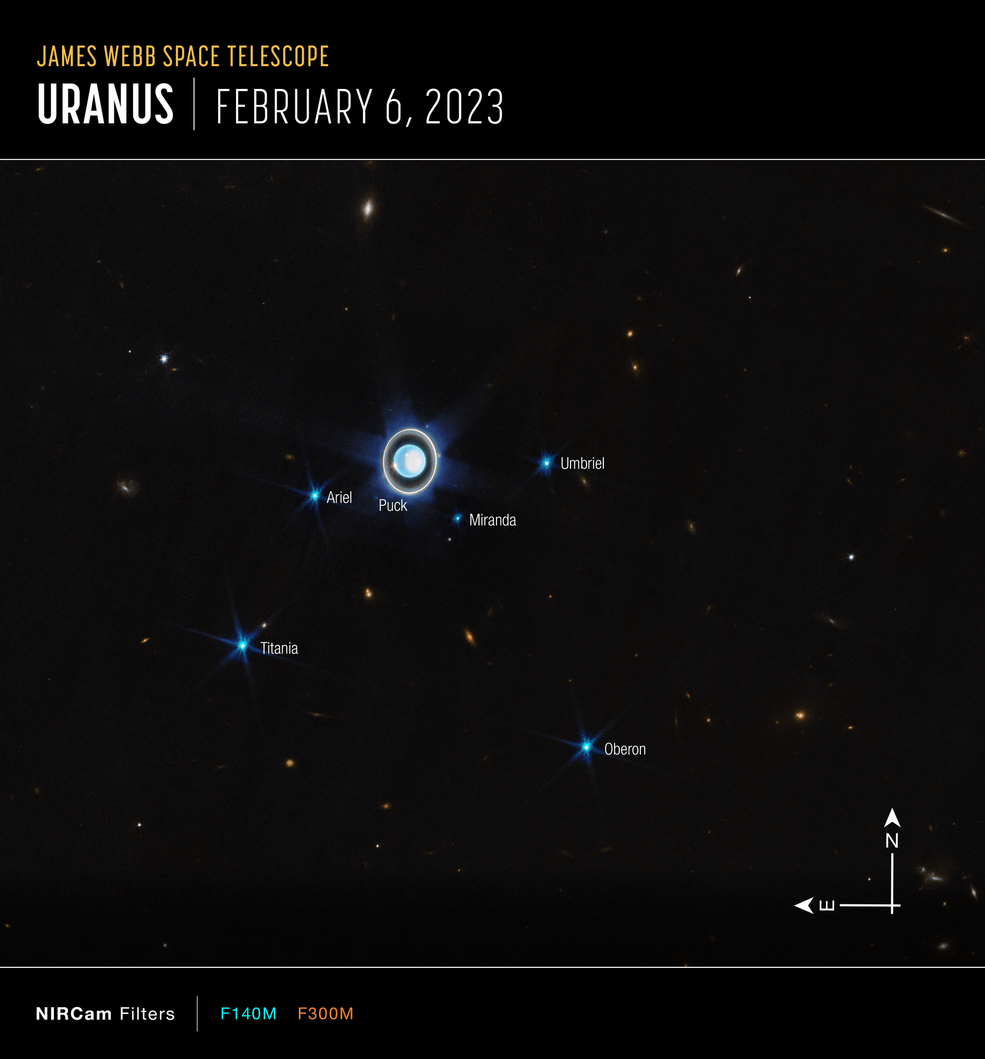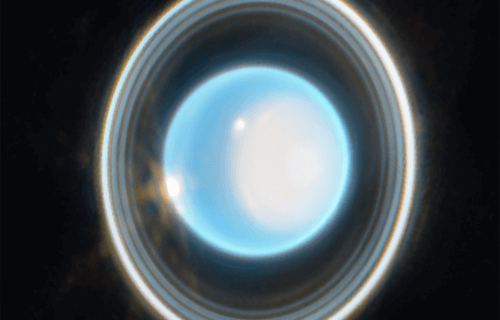GREENBELT, Md. — NASA’s James Webb Space Telescope (JWST) keeps adding to its stunning portfolio of our solar system. This time, the probe is giving astronomers a look at the rings around the seventh planet from the Sun, Uranus.
Thanks to its ultra-sensitive equipment, JWST is giving NASA a peek at the ice giant’s faintest rings. Before now, the rings of Uranus have only been captured twice before, in 1986 by the Voyager 2 spacecraft and later on by the Keck Observatory with advanced adaptive optics. James Webb is also providing scientists with a colorful new look at the planet’s atmosphere as it changes seasons.

Credits: NASA, ESA, CSA, STScI. Image processing: J. DePasquale (STScI)
NASA scientists note that Uranus rotates on its side, at a roughly 90-degree angle from the plane of its orbit. That means Uranus experiences extreme seasons as the planet’s poles either face towards or away from the Sun. Taking 84 years to orbit the Sun, each of Uranus’ poles spends several years in complete sunlight or darkness as it travels through space.
Currently, researchers say the planet is in “late spring,” with the northern pole visible in the new images from JWST. Uranus will enter summer at the north pole in 2028. When Voyager 2 photographed the planet 37 years ago, it was summer at the south pole.
What did JWST get on camera?
Webb’s Near-Infrared Camera (NIRCam) combines data from two filters at 1.4 and 3.0 microns, which the new image reveals in blue and orange, respectively. Uranus has a blue hue in the resulting representative-color image.
In Voyager 2’s pictures, the camera sent back an almost featureless blue-green ball in visible wavelengths. However, with JWST’s infrared wavelengths, scientists now see Uranus is much more detail, revealing a dynamic atmosphere.
“On the right side of the planet there’s an area of brightening at the pole facing the Sun, known as a polar cap. This polar cap is unique to Uranus – it seems to appear when the pole enters direct sunlight in the summer and vanish in the fall,” NASA researchers write in a media release.
Uranus mainly consists of a hot, dense fluid of “icy” materials – containing water, methane, and ammonia – surrounding a small, rocky core.

Credits: NASA, ESA, CSA, STScI. Image processing: J. DePasquale (STScI)
Uranus has lots of rings and even more moons
Although the new photos make the planet’s rings look very bright and close together — appearing almost like one large ring — scientists note that Uranus actually has 13 known rings. Eleven of these rings are visible in the JWST pictures.
Nine of these rings are part of the planet’s “main” rings. Two are fainter, dusty rings, including the diffuse zeta ring closest to Uranus. The NASA team believes that future images from James Webb will capture the two outer rings, first discovered by the Hubble Space Telescope in 2007.
Along with its stunning collection of rings, Uranus also has 27 known moons. While most are too faint for JWST to see, six are bright enough for astronomers to identify. Interestingly, all of this stargazing took place during a 12-minute window using just two of the telescope’s filters.
“It is just the tip of the iceberg of what Webb can do when observing this mysterious planet,” NASA adds.

